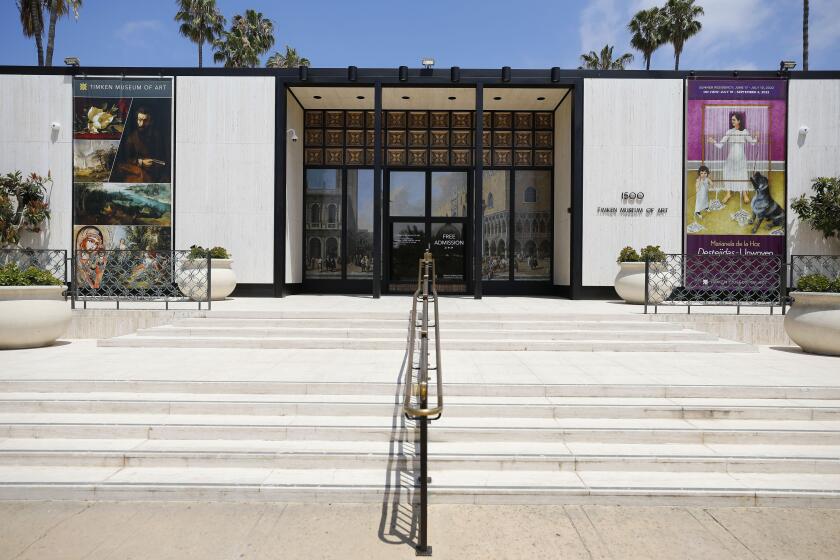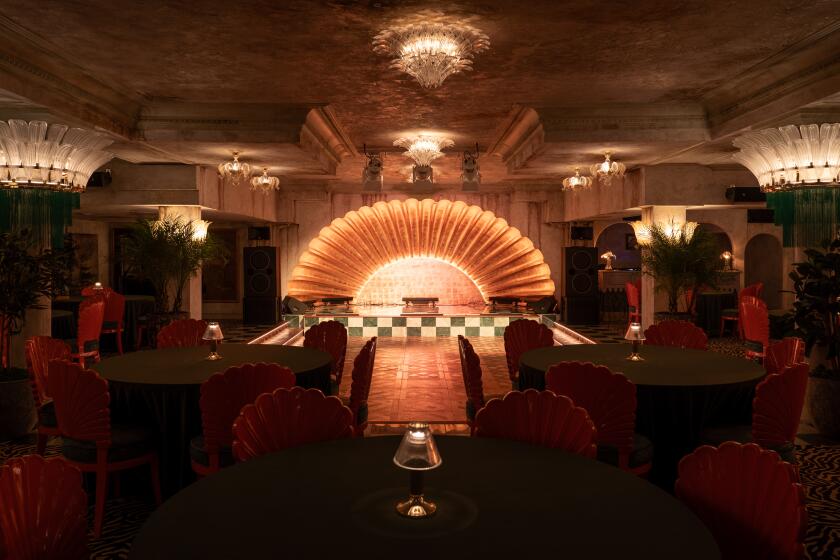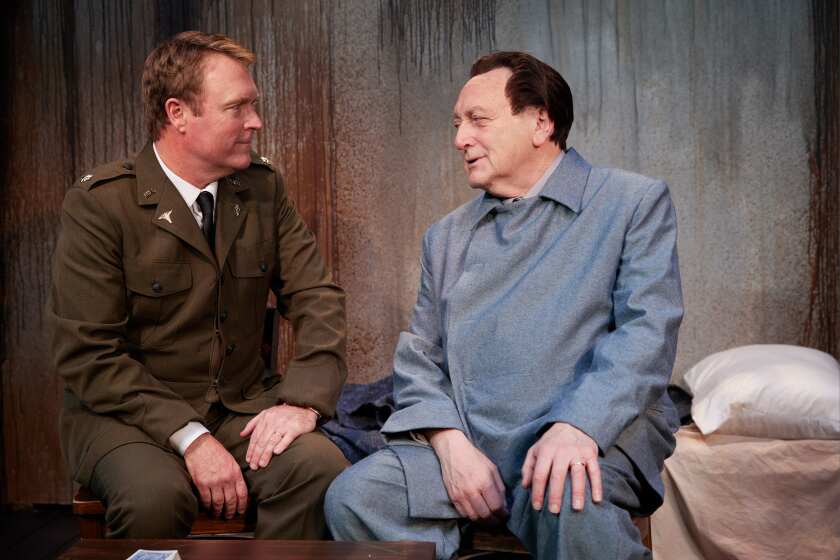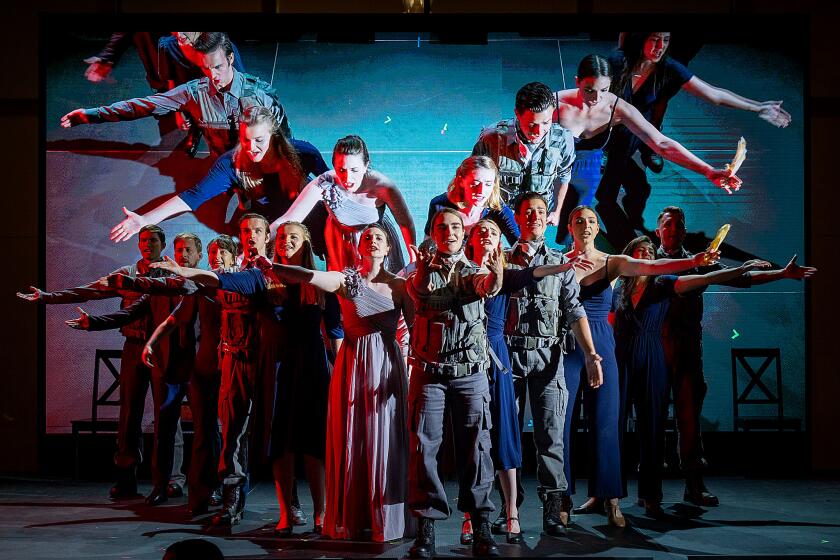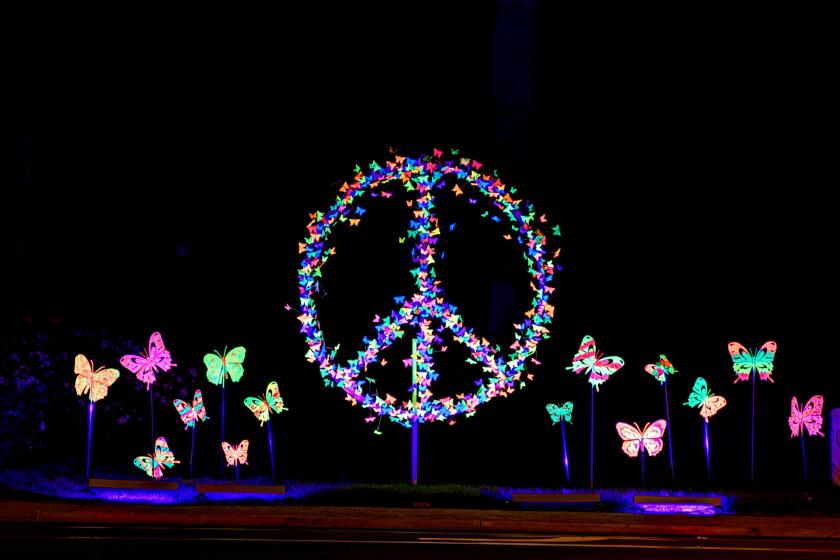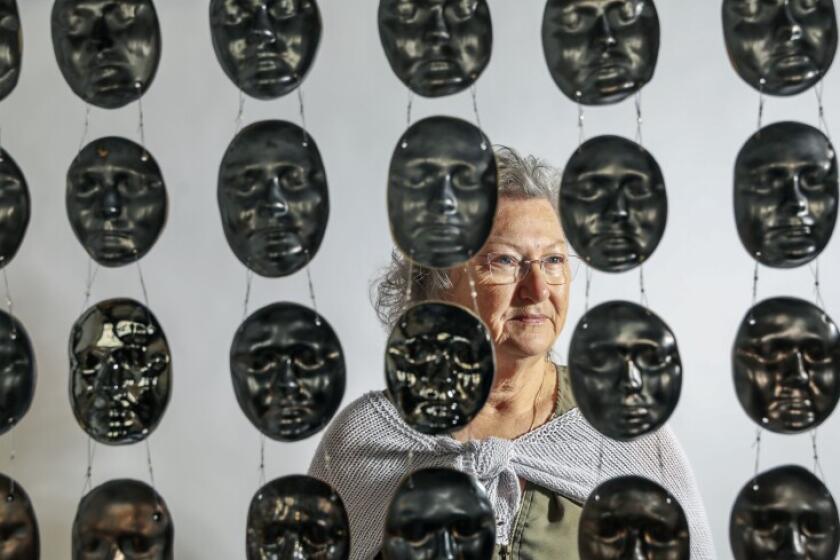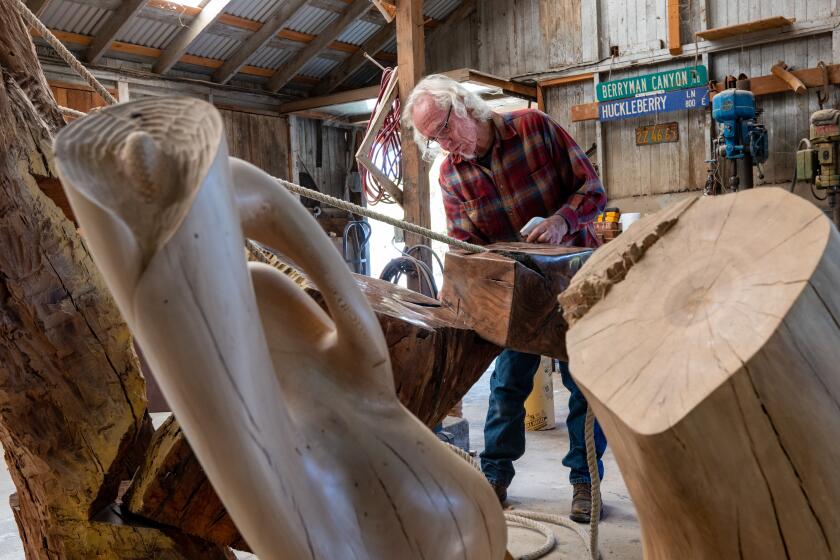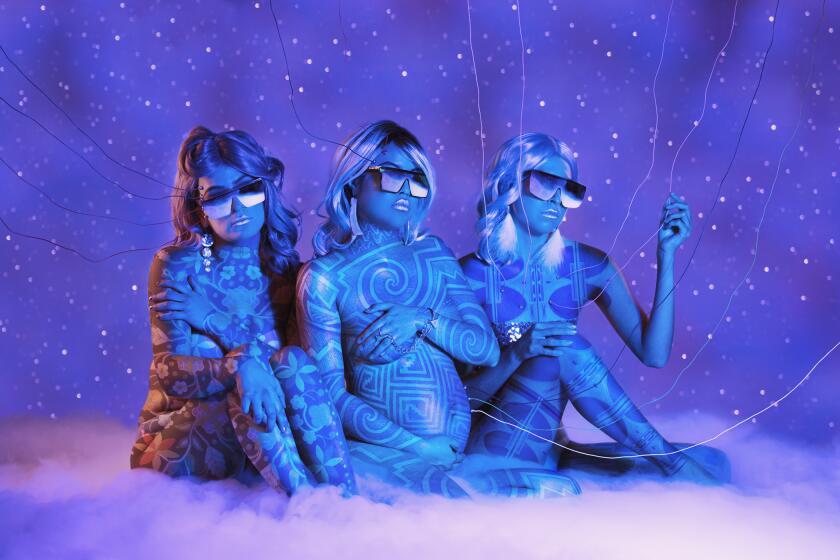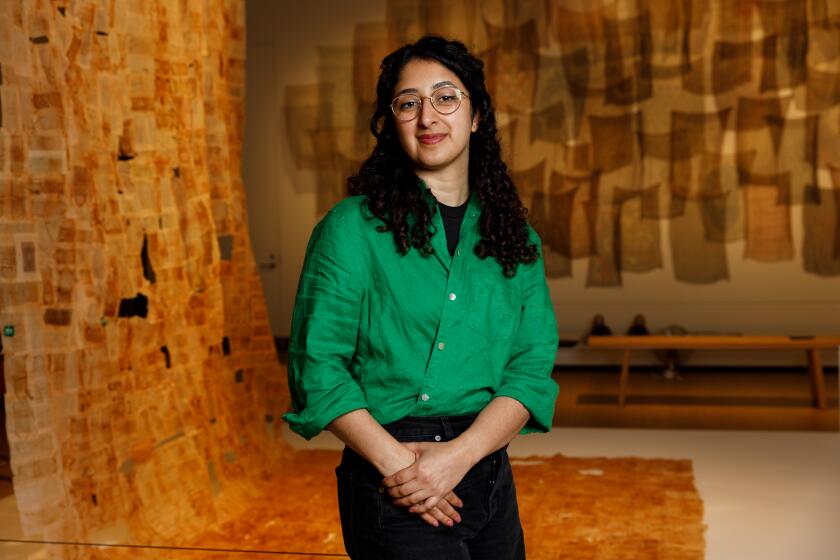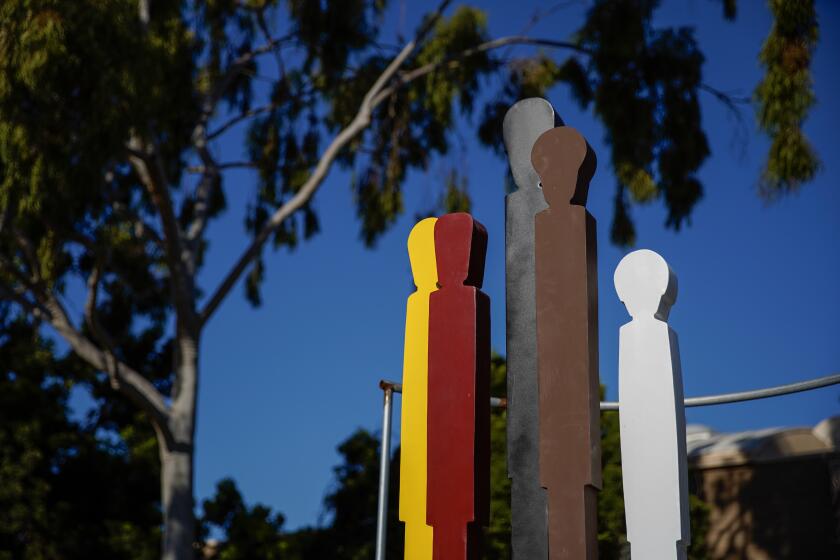Timken Museum to open video installation inspired by Rembrandt’s ‘The Night Watch’

Opening March 1, ‘Night Watching’ was inspired by the crowds who gather to admire the 1642 painting in Amsterdam’s Rijksmuseum
In art galleries there are always two different subjects on display, the artworks themselves and the people who come to observe the works and interpret their meaning for themselves.
That’s the concept behind “Night Watching,” an audiovisual installation inspired by Rembrandt’s largest and most famous painting, the 1642 masterpiece “The Night Watch,” at the Rijksmuseum Amsterdam in the Netherlands.
Created in 2019 by Dutch contemporary artist Rineke Dijkstra, “Night Watching” is a triptych of video screens featuring short films of groups of visitors coming to see Rembrandt’s painting and offering their own spontaneous reactions and observations on a camera that is aimed only at them, rather than the artwork itself.

The installation makes its West Coast premiere on Wednesday at the Timken Museum of Art in Balboa Park. An estimated 60,000 visitors are expected to see the exhibition before it closes June 4. While visitors are at the Timken, they will also be able to see the museum’s own Rembrandt, the 1657 painting “Saint Bartholomew.”
“Since the Timken is the permanent home of Rembrandt’s, ‘Saint Bartholomew,’ we are particularly excited to bring ‘Night Watching’ to San Diego audiences so that they can experience this immersive installation.” said Timken executive director Megan Pogue in a statement. “The Timken considers Rineke Dijkstra’s exploration of the current-day response to Rembrandt a worthy model to emulate. It fits into our institution’s ongoing exploration of the Old Masters, and our commitment to finding new ways to make these lastingly great works relevant for 21st century audiences.”
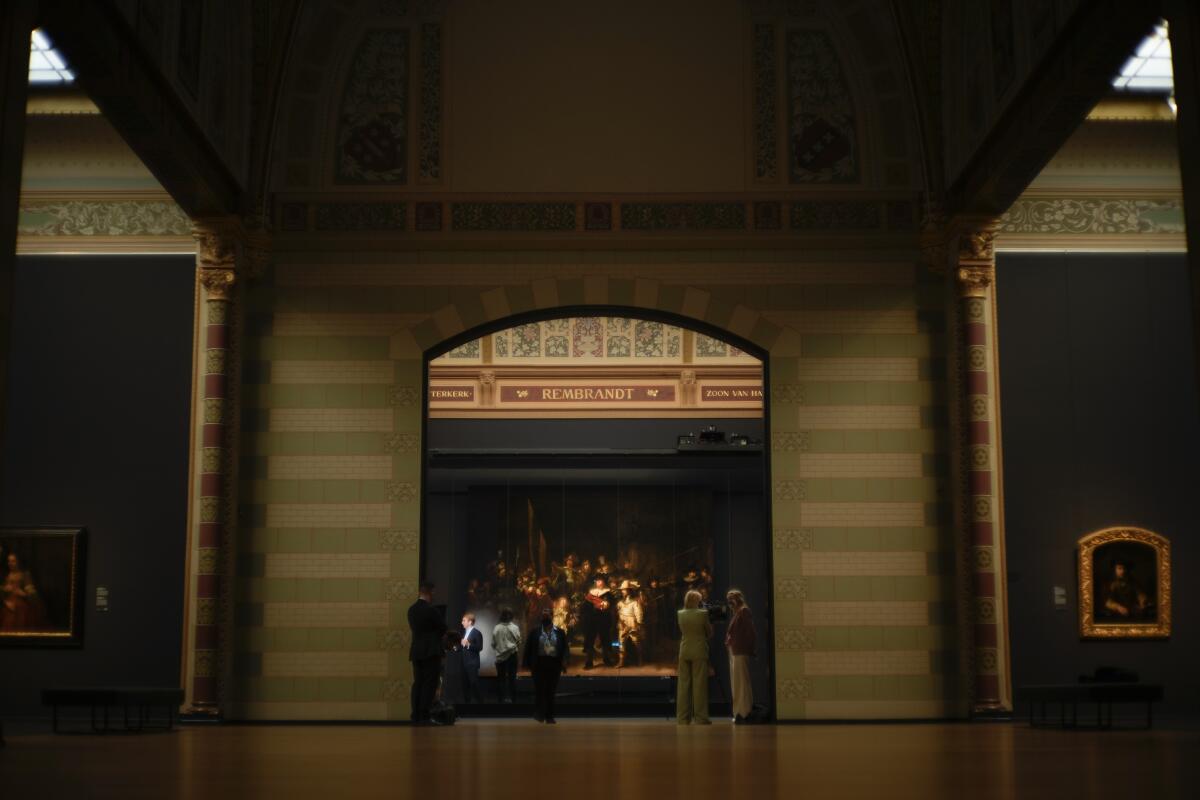
The 12-by-14-foot baroque painting now known as “The Night Watch” was commissioned around 1639 by Capt. Banninck Cocq and other members of a ceremonial Dutch militia to hang on a banquet room wall of the militia’s headquarters in Amsterdam. The painting depicts Cocq and many other well-dressed militia members marching in parade fashion on the street, surrounded by musketeers, flag-bearers, a drummer, a dog and a young girl.
When the painting was completed three years later, it broke new ground in the art form of commissioned portraiture of the 17th century, according to art historians Steven Zucker and Beth Harris of the art resource organization Smarthistory.
Rather than lining up the traditional group of equally sized men in even lighting, facing the viewer in static poses, Rembrandt created a narrative scene of lively action with 34 characters. Some men are raising or firing guns, some are partially in shadow and in the background, and all are coalescing around the militia captain and his lieutenant in the center of the painting. The painting also has elements of foreshortening that create an almost three-dimensional look to the muskets and other details in the painting.
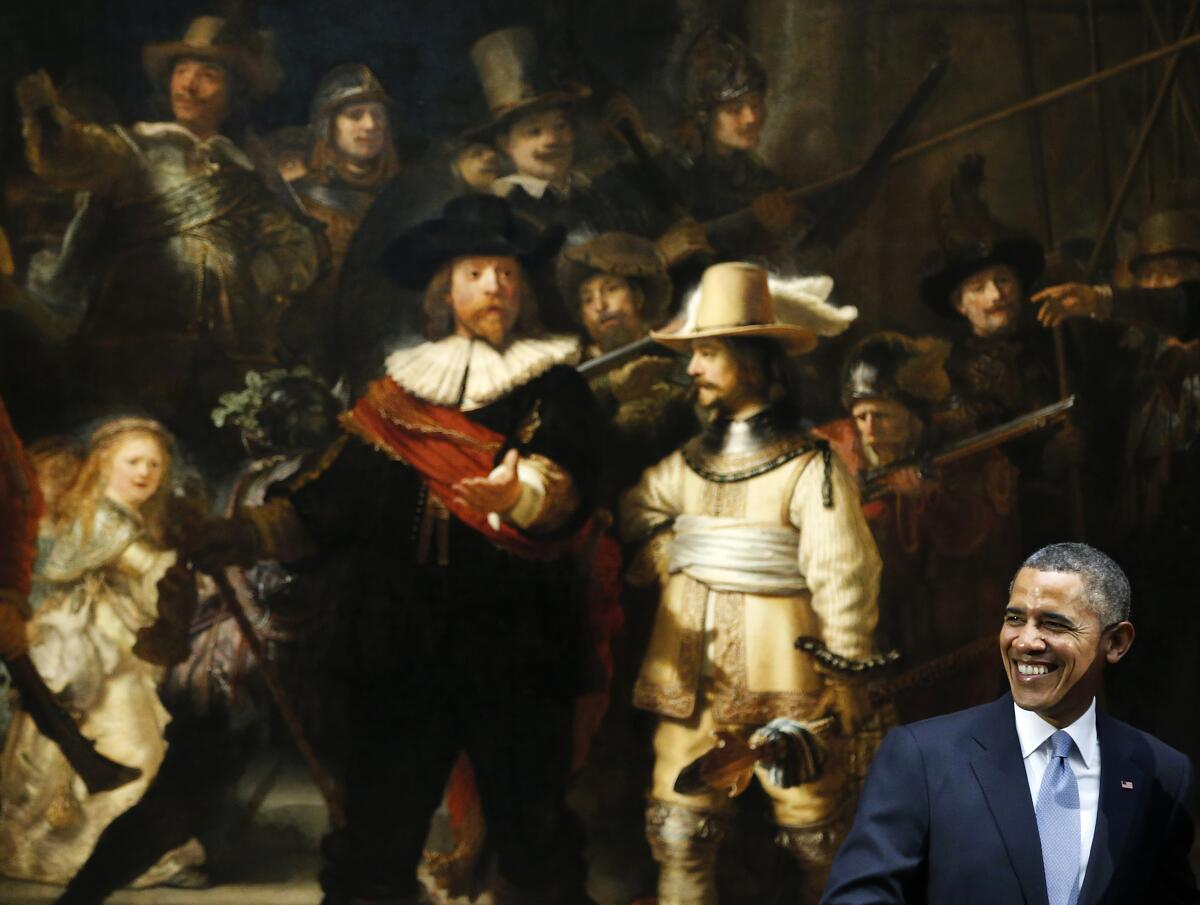
Initially the painting was given the name “Militia Company of District II Under the Command of Captain Frans Banninck Cocq,” and as it was moved from location to location, sections on the top and sides of the canvas were cut off to fit the walls where it was displayed. It wasn’t until many years later that the painting was given its better-known nickname, “The Night Watch,” because the darkened veneer on the painting made what was originally painted to represent a daytime scene appear to be a nighttime tableau.
“Night Watching” is a three-channel video installation, featuring 14 groups of people observing the painting. Each group’s conversation varies from visual descriptions to conjectures about the circumstances in which the painting was created.
There’s a group of Dutch schoolgirls discussing whether Rembrandt gave the only woman in the painting the face of his wife, Saskia. Japanese businessmen consider the painting’s potential for tourism. And a group of young artists discuss what it must feel like to make such an incomparable masterpiece. There are English subtitles on the films so American viewers can understand their conversations.
The scenes in the video are sequenced to explore the different ways a viewer might relate to a famous painting and its subject. The first groups speculate about what they’re seeing, like the barking dog in the corner of the painting and a young girl who is mysteriously glowing from the inside. These sequences are followed by groups who link similar observations to their own lives, making comparisons between past and current society. The final groups examine the painting within a historical art context.
In order to capture these unscripted observations, Dijkstra filmed the encounters on six consecutive evenings after the museum was closed to the public to allow groups to have a more private encounter with the painting.
Dijkstra, a famous Dutch photographer, has won numerous honors, including the Hasselblad Foundation International Award for Photography and the Spectrum International Prize for Photography, both in 2017, and the Johannes Vermeer Prize in 2020.
Over the past decade, she has had major midcareer exhibitions in the Netherlands and Denmark and at the Guggenheim Museum in New York and San Francisco Museum of Modern Art. Her “Night Watching” piece was commissioned by the Rijksmuseum on the occasion of the 350th anniversary of Rembrandt’s death, and it was first exhibited at the Marian Goodman Gallery in London.
After a two-year renovation, the Balboa Park art museum reopens its doors with a focus on inclusion and accessibility
The 58-year-old Timken Museum reopened last June after a two-year, $3 million renovation that modernized the midcentury building and installed more educational information for visitors about its collection, which is focused on European and American masters and Russian icons. As before, the museum offers free admission to the public.
The “Night Watching” exhibition is free, but on Monday morning the Timken is presenting a sneak-peek ticketed event, where the artist, Dijkstra, will discuss her work with Derrick R. Cartwright, the Timken’s director of curatorial affairs. Tickets are $15 for nonmembers and must be purchased in advance at weblink.donorperfect.com/Rineke.
‘Night Watching 2019’ by Rineke Dijkstra
When: Opens Wednesday and runs through May 5. Museum hours 10 a.m. to 5 p.m. Wednesdays-Sundays.
Where: 1500 El Prado, Balboa Park, San Diego
Admission: Free
Online: timkenmuseum.org
Get U-T Arts & Culture on Thursdays
A San Diego insider’s look at what talented artists are bringing to the stage, screen, galleries and more.
You may occasionally receive promotional content from the San Diego Union-Tribune.
